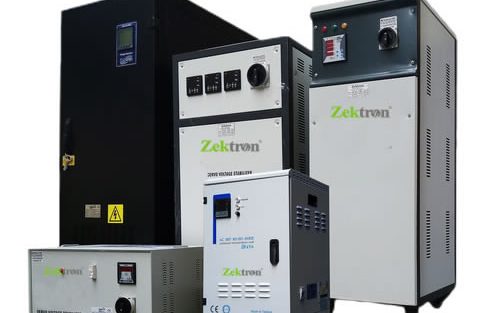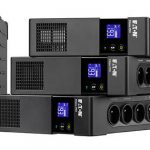Voltage fluctuations are one of the most common issues that we all face. It can harm our expensive appliances such as televisions, refrigerators, air conditioners, Elevators, industrial equipment, hospital apparatus etc, and sometimes affect them critically by leaving them in permanently damaged conditions.
The right voltage stabilizer prevents undesirable voltage fluctuations and offers the desired power for the optimum functioning of these devices. Therefore, buying the right voltage stabilizer for your sensitive electrical appliances is necessary.
As you may not have much technical knowledge about these stabilizers, the selection of a perfect voltage stabilizer becomes critical sometimes. So, here, we will educating you on the selection criteria in choosing your next voltage stabilizer :
1. High degree of stabilization
Voltage fluctuations put the electrical appliance under strain. For example, if a machine operates constantly under high voltage, its insulation will age faster than expected, creating an increase to maintenance costs or even the need of a replacement.
The solution to this problem is a voltage stabilizer with high degree of stabilization, so to eradicate the strain that the equipment is under.
The stabilization a voltage stabilizer achieves is measured by its accuracy. The higher the accuracy, the greater the stabilization achieved.
An accuracy of 5% isn’t acceptable, since it can de-stabilize a steady voltage, if the fluctuation of the electric’s voltage is lower.
If the stabilizer has high accuracy, around 0.5%, a steady operation of our equipment is secured, in its nominal voltage. As a result, its strain is reduced, so is the need of its maintenance and damages as well as destruction can be avoided, for the entirety or part of the equipment.
2. Stabilization speed
In sensitive data networks, where speed of data transport are great, even a small fluctuation in voltage can cause severe problems in communication, such as incomplete data transfer or destruction of sensitive equipment (e,g, hard drives, servers, PC etc).
A “slow” stabilizer ( in a high speed network) cannot eradicate these problems.
On the other hand, a high speed stabilizer can adjust the voltage fast enough, in order to prevent the problems mentioned above.
3. Capability of operating under full load in the entirety of voltage range
Under big fluctuations – more specifically when voltages are small under constant load – the currents that are caused are high. Under these circumstances, the load isn’t changing and steady supply is needed.
The point to be taken into consideration, is that the stabilizer that you will choose must ensure the continuation of the operation under full load, even in the lower limits of the voltage.
Quality electromechanic stabilizer, due to their construction and way of operation, have great tolerance in high currents , in comparison with electronic (static) stabilizers.
4. Ensure uninterrupted operation of equipment
In case of voltage interruptions, the stabilizer should ensure the correct return of the voltage, achieving the absorption of any accumulated loads. To achieve this, the stabilizer should withstand high strains and be able to operate over full voltage range, under full load.
5. Qualitative voltage at the output of the stabilizer
In addition to constant voltage, the quality of the power supply of the equipment is also influenced by the quality of the voltage. For example, noise insertion is a poor signal quality signal and can destroy measurement results and / or data transfer.
So the stabilizer you choose should ensure that no deformations and no-line noise are introduced.
6. Suitability of the stabilizer according to installation specifications
Finally, for selecting the appropriate stabilizer, you should consider the specifications of the line’s voltage, such as its load range, or whether there is a need for symmetrical or asymmetrical stabilization.
Loads requiring stabilization of their input voltage may be from very small, 1kva, to central loads of 2000kva. For the needs of a line that supplies small single-phase loads, a suitable power stabilizer should be selected. Even better is there to be a small increase in selected power so you are covered in the case of line extension.
If the need for the line is for asymmetrical stabilization – always referring to three-phase loads – it should be ensured that it can be covered. In the case, therefore, where one line has more loads than another – for example, in one phase the lighting of a room is connected, and there are three-phase loads connected to all three phases (such as a three-phase motor), the phase with lighting will require a higher current than the others, as shown in the following figure.
For the purpose of proper stabilization, the stabilizer should not be affected by this asymmetry.

Also, perhaps the most important part of choosing the right economic solution is the rate of variation that exists in the network / power supply voltage and requires stabilization. In a network with very frequent and large dips, such as industrial areas, large sinking rates (such as up to 35%) and lower surges (such as + 15%) are required.
In conclusion, the ideal is to have a relatively wide variety of stabilizer models, so that the options available according to the specifications of the plant for which the stabilizer is intended are also increased.



